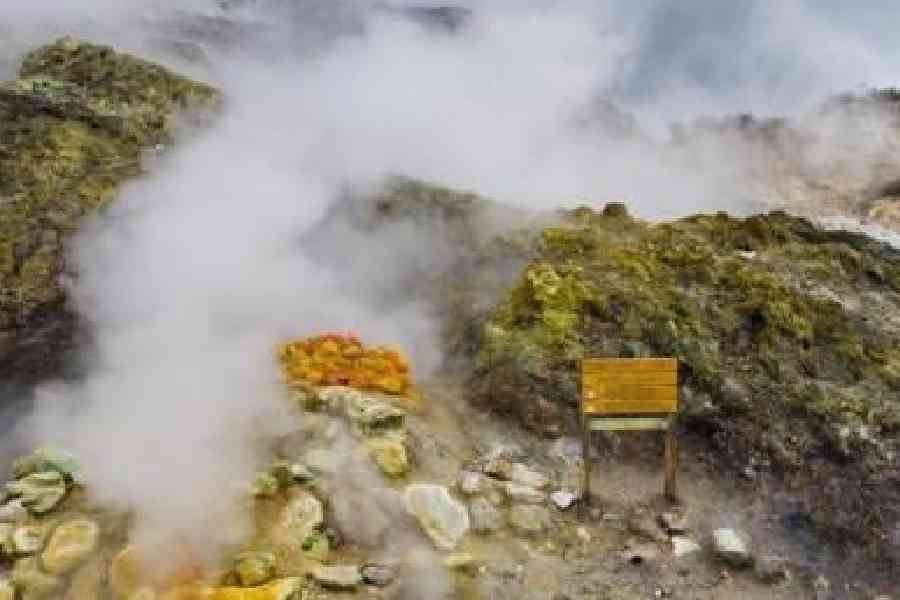A piercing alarm burst from millions of cellphones, a signal to hundreds of thousands of people to pack their bags and flee one of Europe’s most dangerous volcanoes. But most of the Italians who heard it shrugged.
It was around 5pm on a Friday, and the alert wasn’t announcing a real crisis.
Instead, it was part of a four-day drill this month, coordinated by the Italian civil protection department, to prepare a densely populated area near Naples for the day its residents might face a host of volcanic perils: The ground buckling underfoot. Ribbons of toxic fumes. Exploding boils of molten rock.
The threat does not loom on the horizon, like nearby Mount Vesuvius to the east. Instead, a 12km-wide caldera — riddled with volcanoes — is recessed in the earth and sea west of Naples, forming what is called the Campi Flegrei, or “burning fields”.
Most experts believe an eruption remains a remote possibility, but volcanic activity — hundreds of mostly minor earthquakes, along with a measurable rise and subsidence of the earth — has picked up considerably in recent years, panicking some residents and putting the authorities on high alert.
So on October 12, locals from the seaside town of Pozzuoli, which sits on part of the Campi Flegrei, gathered in a parking lot to rehearse. Similar scenes took place in other red zone areas, where the possibility of eruption is highest.
“We live on top of this caldera and we’re a bit anxious,” said Lucia Scherillo, 74. The uncertainty didn’t help.
“Some volcanologists say it’s dangerous, others say it isn’t,” she said. “What do I know?” she added. “I am in the hands of God, but if I’m able to save myself, it wouldn’t be so bad, I have a lot of grandchildren.”
Her friend Amalia Colavecchia, 73, was more sanguine. “Pozzuoli has always danced — it’s been like this for centuries,” she said. But lately, “it’s been dancing up a storm”.
Between the Campi Flegrei and Vesuvius, Italians in the area have long lived with the threat of disaster — and with reminders of catastrophe in Pompeii’s ruins, and the tourists they bring, not far to the southeast. Residents have built resort towns by the sea and neighbourhoods on Vesuvius’s slopes, and many remain ambivalent about the danger.
Recent activity in the Campi Flegrei drove many more people to take part in this year’s drill compared with one in 2019 that was virtually unattended. But some remained doubtful that any plan could effectively save half a million people on the run.
Volcanic activity ramped up in the Campi Flegrei in 2005, and since 2012, Italy’s national civil protection department has put it on a “yellow” alert. The frequency of earthquakes has recently intensified in recent months, including the strongest in 40 years, pushing some people temporarily out of their homes for fear of instability.
The fields were themselves created by an eruption some 39,000 years ago. Later eruptions, the most recent in 1538, pockmarked the region with craters, lakes and hills.
Studies show that the recent activity is tied to the movement of an underground magma source, as well as to the gases it releases. “This dynamic could lead to a volcanic eruption in the future,” which is why it is closely monitored, “and why emergency plans have been drawn up,” said Mauro A. Di Vito, the director of Vesuvian Observatory in Naples, part of the National Institute of Geophysics and Volcanology.
New York Times News Service

